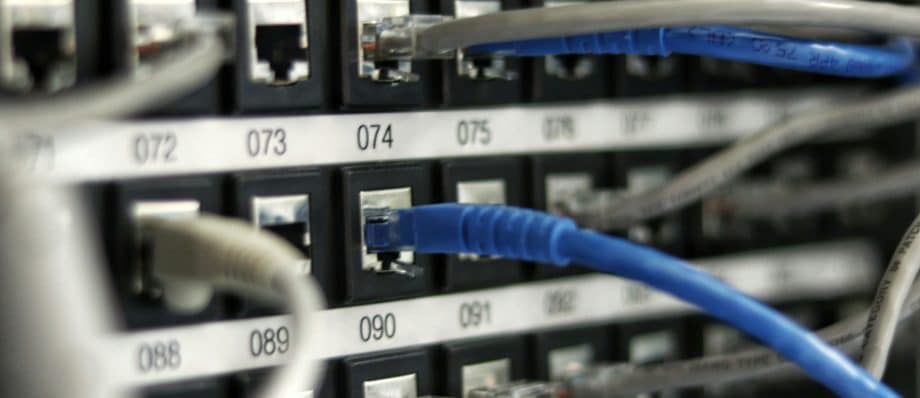How IoT (Internet of Things) is Revolutionising Business Telecommunications
The Internet of Things (IoT) has emerged as a transformative force, revolutionising industries across the globe. While its impact is widespread, one area where IoT is particularly influential is in business telecommunications. The integration of connected devices into communication networks has opened up new possibilities, transforming the way businesses communicate, operate, and deliver value. In this blog, we will explore the impact of IoT on business telecoms, how connected devices are changing communication strategies, and potential applications in various industries.
Understanding IoT in Business Telecommunications
What is IoT?
The Internet of Things (IoT) refers to the network of interconnected devices that communicate and share data over the internet. These devices, equipped with sensors and communication capabilities, can collect, analyse, and exchange data in real-time, enabling automated processes and smarter decision-making.
IoT in Business Telecommunications
In the context of business telecommunications, IoT encompasses the integration of connected devices into communication networks. These devices can include smartphones, tablets, wearables, sensors, machinery, vehicles, and more. By connecting these devices to the internet and each other, businesses can create a unified communication ecosystem that enhances efficiency, productivity, and innovation.
Impact of IoT on Business Telecoms
Enhanced Connectivity
IoT devices enable seamless communication between people, machines, and systems. By connecting disparate devices and systems, businesses can create a unified communication infrastructure that improves collaboration and decision-making.
Example:
- Remote Monitoring: IoT sensors installed on machinery can transmit real-time data to a central monitoring system, enabling remote diagnostics and troubleshooting.
Improved Efficiency
IoT-driven automation streamlines processes and reduces manual intervention, leading to improved efficiency and cost savings. By automating routine tasks and optimising resource usage, businesses can achieve greater productivity and operational excellence.
Example:
- Smart Energy Management: IoT-enabled smart meters and sensors can monitor energy usage in real-time, allowing businesses to identify inefficiencies and optimise consumption patterns.
Enhanced Customer Experience
IoT enables businesses to deliver personalised and context-aware experiences to their customers. By leveraging IoT data and analytics, businesses can gain insights into customer behavior, preferences, and needs, allowing them to tailor their communication strategies and offerings accordingly.
Example:
- Location-Based Services: Retailers can use IoT beacons to send personalised promotions and offers to customers based on their location within a store.
Data-Driven Insights
IoT generates vast amounts of data that can be analysed to uncover valuable insights and trends. By leveraging IoT analytics, businesses can gain a deeper understanding of their operations, identify opportunities for improvement, and make data-driven decisions.
Example:
- Predictive Maintenance: IoT sensors can monitor equipment performance and detect signs of potential failure, allowing businesses to schedule maintenance proactively and avoid costly downtime.
Changing Communication Strategies with IoT
Shift Towards Unified Communications
IoT encourages the convergence of communication channels, leading to the adoption of unified communication (UC) platforms. These platforms integrate various communication tools, such as voice, video, messaging, and collaboration, into a single interface, enhancing productivity and collaboration.
Example:
- Integrated Messaging: Unified communication platforms combine email, instant messaging, and team collaboration tools into a unified interface, allowing employees to communicate seamlessly across channels.
Emphasis on Mobility and Flexibility
IoT facilitates mobility and flexibility in communication, enabling employees to stay connected and productive from anywhere, at any time. With IoT-enabled mobile devices and applications, employees can access communication tools and data remotely, allowing for greater flexibility in work arrangements.
Example:
- Mobile Collaboration Apps: IoT-powered collaboration apps allow employees to participate in virtual meetings, share files, and collaborate in real-time from their smartphones or tablets, irrespective of their location.
Focus on Contextual Communication
IoT enables contextual communication, where messages and interactions are tailored to the specific context and situation. By leveraging IoT data, businesses can deliver more relevant and timely communication, enhancing engagement and user experience.
Example:
- Contextual Alerts: IoT sensors can trigger automated alerts and notifications based on predefined thresholds or events, ensuring that relevant stakeholders are notified promptly in case of emergencies or critical incidents.
Applications of IoT in Various Industries
Manufacturing
IoT is revolutionising manufacturing processes by enabling smart factories and connected supply chains. IoT sensors embedded in equipment and machinery collect real-time data on production processes, enabling predictive maintenance, process optimisation, and quality control.
Example:
- Predictive Maintenance: IoT sensors monitor equipment performance and detect signs of potential failure, allowing manufacturers to schedule maintenance proactively and avoid unplanned downtime.
Healthcare
IoT is transforming healthcare delivery by enabling remote patient monitoring, personalised treatment plans, and predictive analytics. Wearable devices, medical sensors, and IoT-enabled medical equipment collect patient data in real-time, allowing healthcare providers to deliver more proactive and personalized care.
Example:
- Remote Patient Monitoring: IoT-enabled wearable devices monitor vital signs and health metrics, allowing healthcare providers to remotely monitor patients with chronic conditions and intervene early in case of abnormalities.
Retail
IoT is reshaping the retail industry by enabling personalized shopping experiences, inventory management, and supply chain optimisation. IoT sensors, beacons, and RFID tags track customer behavior, inventory levels, and product movement, allowing retailers to optimize operations and enhance customer engagement.
Example:
- In-Store Analytics: IoT beacons and sensors track customer movement and behavior within stores, enabling retailers to analyse foot traffic, optimise store layouts, and deliver personalized promotions based on customer preferences.
Transportation and Logistics
IoT is revolutionising transportation and logistics by enabling real-time tracking, route optimisation, and predictive maintenance. IoT sensors installed in vehicles, cargo, and infrastructure collect data on location, condition, and performance, allowing businesses to streamline operations and improve efficiency.
Example:
- Fleet Management: IoT-enabled telematics systems track vehicle location, fuel consumption, and driver behavior in real-time, allowing fleet managers to optimize routes, reduce fuel costs, and improve driver safety.
The Internet of Things (IoT) is revolutionising business telecommunications, transforming the way businesses communicate, operate, and deliver value. By integrating connected devices into communication networks, businesses can enhance connectivity, improve efficiency, deliver personalised experiences, and gain valuable insights into their operations.
As IoT adoption continues to grow, businesses across various industries will increasingly leverage IoT to drive innovation, improve productivity, and gain a competitive edge in the digital economy. By embracing IoT-powered communication strategies, businesses can position themselves for success in an increasingly connected and data-driven world.

Email: support@abcservice.co.uk
Website: https://www.abcservice.co.uk



